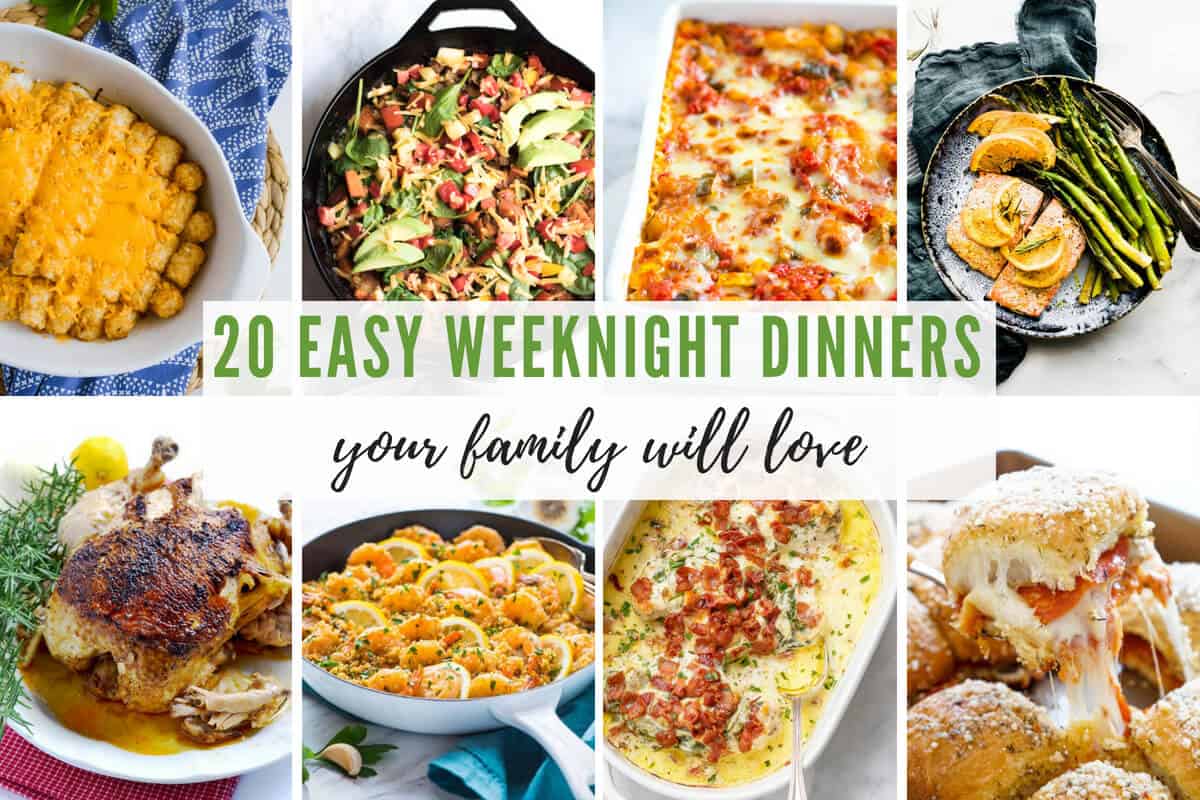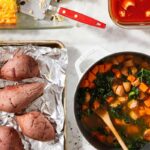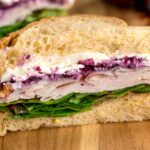Imagine a weeknight where dinner is ready in minutes, without sacrificing flavor or nutrition. This isn’t a fantasy; it’s the reality unlocked by mastering the art of nut-free freezer meals. Say goodbye to frantic after-work cooking and hello to delicious, healthy meals that are always on hand. This guide unveils the secrets to planning, preparing, and perfectly preserving a month’s worth of nut-free culinary creations, designed to simplify your weeknights and tantalize your taste buds. From simple stir-fries to hearty stews, we’ll cover everything you need to transform your freezer into a culinary time machine, dispensing deliciousness on demand.
We’ll walk you through detailed meal planning, offering sample weekly and monthly calendars brimming with nut-free recipe ideas. Discover easy-to-follow recipes, including adaptations of classic dishes, ensuring that even beginners can confidently navigate the world of freezer meal preparation. We’ll cover essential techniques for freezing various food types to maintain quality and prevent freezer burn, while emphasizing food safety best practices. Learn to create visually appealing meals with diverse textures and flavors, and discover how to cater to specific dietary needs, such as vegan, gluten-free, or low-sodium options. Finally, we’ll provide expert tips for efficient reheating and maximizing the nutritional value of your meticulously crafted freezer meals.
Step-by-Step Cooking and Freezing Procedures

Preparing nut-free freezer meals simplifies weeknight dinners, offering a convenient and healthy option. This section details the process of creating a delicious and safe nut-free chicken and vegetable stir-fry, from preparation to freezing, emphasizing techniques for maintaining food quality and safety.
Chicken and Vegetable Stir-Fry Preparation
This recipe focuses on creating a vibrant and flavorful stir-fry, easily portioned and frozen for future use. The key is to cook the ingredients separately before combining to prevent overcooking and maintain texture during freezing and reheating. We will use chicken breast, broccoli florets, bell peppers, and a simple soy-based sauce.
- Chicken Preparation: Dice 1.5 lbs of boneless, skinless chicken breast into bite-sized pieces. Lightly season with salt and pepper. Stir-fry the chicken in a tablespoon of olive oil over medium-high heat until fully cooked and lightly browned. Remove from the pan and set aside.
- Vegetable Preparation: Cut 1 head of broccoli into florets and 1 red and 1 green bell pepper into strips. Stir-fry the broccoli and peppers separately in the same pan, adding a little more olive oil if needed. Cook until crisp-tender, about 5-7 minutes. Remove from the pan and set aside.
- Sauce Preparation: In a small bowl, whisk together ¼ cup soy sauce (ensure it’s nut-free!), 2 tablespoons of rice vinegar, 1 tablespoon of honey or maple syrup, 1 teaspoon of sesame oil, and ½ teaspoon of ground ginger.
- Combining and Cooking: Return the chicken and vegetables to the pan. Pour the sauce over the mixture and cook for another 2-3 minutes, stirring constantly, until the sauce has thickened slightly and coats everything evenly. The stir-fry should be steaming hot throughout.
Freezing Techniques for Optimal Quality
Proper freezing techniques are crucial for preserving the quality and preventing freezer burn. Freezer burn results from ice crystals forming on the surface of food, causing it to dry out and lose flavor. The following techniques minimize this risk.
- Cool Down Quickly: Allow the stir-fry to cool completely before freezing. This can be expedited by spreading it thinly in a shallow container or on a baking sheet lined with parchment paper. Rapid cooling minimizes ice crystal formation.
- Portioning for Convenience: Divide the cooled stir-fry into individual or family-sized portions using freezer-safe containers or bags. Using smaller portions allows for more convenient thawing and reheating, reducing food waste.
- Airtight Sealing: Ensure that the containers or bags are completely airtight to prevent freezer burn and maintain freshness. Press out excess air from bags before sealing. Label each container with the contents and date for easy identification.
- Freezing Sauces Separately (Optional): For larger batches, consider freezing the sauce separately. This helps prevent the sauce from becoming watery during freezing and thawing. Add the sauce to the stir-fry when reheating.
Food Safety Practices for Freezer Meals
Maintaining food safety throughout the preparation and freezing process is paramount. These practices ensure the safety and quality of your nut-free freezer meals.
- Temperature Control: Ensure that all ingredients are handled and cooked at safe temperatures. Cook chicken to an internal temperature of 165°F (74°C) to eliminate harmful bacteria. Avoid leaving cooked food at room temperature for extended periods (more than 2 hours).
- Cleanliness is Key: Maintain a clean and sanitized work area to prevent cross-contamination. Wash hands thoroughly before and after handling food.
- Proper Storage: Freeze the stir-fry within 2 hours of cooking. Store frozen meals in the coldest part of the freezer, ideally at 0°F (-18°C) or below. Avoid repeated freezing and thawing.
- Thawing Safely: Thaw frozen meals in the refrigerator overnight or using the defrost setting on your microwave. Never thaw food at room temperature.
Creating Nut-Free Freezer Meal Variations
Expanding upon a basic nut-free freezer meal recipe allows for incredible versatility and caters to diverse tastes and dietary needs. By simply swapping out protein sources, vegetables, and spices, you can create a week’s worth of delicious and convenient meals without ever feeling bored. This section explores several variations to inspire your own culinary creativity.
Five Nut-Free Freezer Meal Variations
The following examples demonstrate how easily a simple nut-free freezer meal base can be transformed. Each variation highlights different flavor profiles and nutritional components, proving that variety is the spice of life (and the freezer!).
- Variation 1: Chicken & Veggie Stir-Fry: This vibrant meal features tender chicken breast, sliced bell peppers (red, yellow, and orange for visual appeal), broccoli florets, and snap peas, all tossed in a savory soy sauce-ginger-garlic stir-fry sauce. The texture is a delightful mix of tender chicken, crisp-tender vegetables, and a slightly thickened sauce.
- Variation 2: Lentil Shepherd’s Pie (Nut-Free): A hearty and healthy option, this replaces traditional ground meat with flavorful lentils. The lentil base is richly seasoned with herbs like thyme and rosemary, and topped with a creamy mashed sweet potato layer for a beautiful golden hue and comforting texture. This variation is naturally gluten-free.
- Variation 3: Turkey & Black Bean Chili: This chili bursts with color and flavor. Ground turkey combines with black beans, corn, diced tomatoes, and a blend of chili powder, cumin, and smoked paprika for a smoky, southwestern kick. The texture is hearty and slightly chunky, with a vibrant reddish-brown color.
- Variation 4: Salmon with Roasted Asparagus and Lemon: This elegant and healthy option features flaky salmon fillets, tender roasted asparagus spears, and a bright squeeze of lemon juice. The vibrant green asparagus contrasts beautifully with the pink salmon, creating a visually stunning meal. The texture is a balance of flaky fish and tender-crisp asparagus.
- Variation 5: Beef and Broccoli with Brown Rice: This classic combination offers a satisfying and flavorful meal. Tender beef strips are stir-fried with broccoli florets and a savory sauce, served over fluffy brown rice. The dark green broccoli contrasts beautifully with the rich brown rice and the darker color of the beef, creating a visually appealing dish.
Three Visually Appealing Nut-Free Freezer Meals
Presentation matters, even with freezer meals! These examples focus on creating meals that are not only delicious but also visually appealing, making mealtime more enjoyable.
- Rainbow Veggie and Tofu Scramble: Imagine a vibrant scramble brimming with diced bell peppers (red, yellow, orange), spinach, mushrooms, and crumbled tofu. The colors create a stunning rainbow effect, while the textures are a delightful mix of soft tofu and slightly crisp vegetables. The overall presentation is bright and cheerful, making it an appealing choice for both adults and children.
- Layered Chicken and Vegetable Casserole: This casserole showcases layers of seasoned chicken, vibrant roasted vegetables (such as carrots, zucchini, and squash), and a creamy, cheesy sauce (ensure the cheese is nut-free). The layers create visual interest, with the different colors and textures adding depth to the presentation. The warm, golden-brown top provides a comforting visual cue.
- Mediterranean Quinoa Bowl: This bowl features fluffy quinoa as a base, topped with colorful chopped cucumber, tomatoes, Kalamata olives, and crumbled feta cheese (ensure it’s nut-free). A lemon-herb vinaigrette adds a bright pop of color and flavor. The vibrant colors and contrasting textures (creamy quinoa, crunchy vegetables, salty olives) create a visually stunning and healthy meal.
Vegan, Gluten-Free, Low-Sodium Lentil Soup
This recipe provides a hearty and healthy meal that caters to multiple dietary needs.
Recipe: Sauté diced carrots, celery, and onions in olive oil. Add red lentils, vegetable broth (low-sodium), diced tomatoes, and a blend of cumin, turmeric, and coriander. Simmer until lentils are tender. Season with salt (to taste, keeping it low) and black pepper. Serve with a dollop of vegan yogurt (optional) for added creaminess and visual appeal. This soup is naturally gluten-free and packed with plant-based protein. The vibrant orange-red color from the lentils and tomatoes is visually appealing. The texture is hearty and slightly chunky, offering a satisfying and healthy meal.
Optimizing Nut-Free Freezer Meals for Easy Weeknights
Preparing nut-free freezer meals offers a fantastic way to streamline weeknight dinners, ensuring nutritious and delicious meals are readily available without the hassle of daily cooking. This section focuses on optimizing the process, from reheating techniques to efficient meal preparation strategies.
Reheating Nut-Free Freezer Meals for Optimal Texture and Flavor
Proper reheating is crucial for maintaining the quality of your nut-free freezer meals. Incorrect methods can lead to dry, tough textures or a loss of flavor. The best method depends on the type of meal. For example, casseroles and stews often benefit from a gentle oven reheat, while stir-fries might be better suited to a quick microwave blast.
- Oven Reheating: Preheat your oven to 350°F (175°C). Transfer the frozen meal to an oven-safe dish, cover loosely with foil to prevent drying, and bake until heated through, typically 30-45 minutes depending on the meal’s volume. This method is ideal for casseroles and dishes with a creamy sauce, as it allows for even heating and prevents scorching.
- Microwave Reheating: Place the frozen meal in a microwave-safe dish, cover loosely with a microwave-safe lid or plastic wrap, and microwave on medium power, stirring halfway through, until heated through. Microwave times vary depending on the wattage of your microwave and the size of the meal, but generally range from 3-7 minutes. This is quicker but may not be as effective for larger or thicker meals.
- Stovetop Reheating (for sauces and soups): Gently heat sauces and soups in a saucepan over low heat, stirring frequently to prevent sticking and burning. This is a great way to reheat liquids without compromising their texture.
Efficient Nut-Free Freezer Meal Preparation Techniques
Batch cooking and strategic meal prepping are key to maximizing efficiency when creating nut-free freezer meals. Planning ahead and utilizing your time effectively can significantly reduce the overall time commitment.
- Batch Cooking: Prepare large batches of common components like cooked grains (quinoa, rice), roasted vegetables (broccoli, carrots, sweet potatoes), and cooked proteins (chicken, tofu, beans). These can be stored separately in the freezer and then combined to create a variety of different meals throughout the week, minimizing individual cooking time.
- Meal Prepping: Dedicate a specific time each week (e.g., a Sunday afternoon) to preparing several freezer meals. Assemble the ingredients, cook everything, portion the meals into freezer-safe containers, and label them with the contents and date. This organized approach simplifies weeknight dinners immensely.
- Utilize Freezer-Safe Containers: Invest in a good selection of freezer-safe containers, ideally ones that are stackable and easy to label. This allows for organized freezer storage and prevents freezer burn.
Comparison of Nut-Free Freezer Meals
The following table compares three different nut-free freezer meals, highlighting their cooking time, reheating time, and nutritional information (per serving). These values are approximate and can vary based on specific ingredients and portion sizes.
| Meal | Cooking Time | Reheating Time (Microwave) | Reheating Time (Oven) | Approximate Calories | Protein (g) |
|---|---|---|---|---|---|
| Chicken and Vegetable Stir-Fry | 30 minutes | 3-5 minutes | N/A | 350 | 25 |
| Lentil Soup | 45 minutes | 5-7 minutes | 20-30 minutes | 280 | 18 |
| Turkey and Sweet Potato Casserole | 1 hour | 7-10 minutes | 35-45 minutes | 400 | 30 |
By following this comprehensive guide, you’ll not only conquer the challenge of weeknight dinners but also unlock a world of culinary convenience. The time invested in preparing these nut-free freezer meals is a small price to pay for the freedom and flexibility they provide. Imagine the joy of effortlessly pulling a delicious, healthy meal from your freezer, knowing that a flavorful, stress-free dinner awaits. So, embrace the power of planning, the simplicity of preparation, and the satisfaction of knowing you’ve conquered the weeknight dinner dilemma once and for all. Your taste buds, your family, and your sanity will thank you.
Question & Answer Hub
Can I use pre-cooked ingredients in my freezer meals?
Yes, using pre-cooked ingredients like roasted vegetables or pre-cooked meats can significantly speed up the preparation process. Just ensure they are properly cooled before freezing.
How long can nut-free freezer meals be stored?
Most nut-free freezer meals can be stored for 2-3 months, maintaining their quality and flavor. Always label your containers with the date of preparation.
What’s the best way to thaw frozen meals?
The safest method is to thaw your meals overnight in the refrigerator. You can also thaw them quickly in the microwave, but be sure to cook them thoroughly afterward.
Are there any specific containers recommended for freezing meals?
Airtight, freezer-safe containers are ideal for preventing freezer burn. Reusable silicone bags or glass containers are excellent choices.


